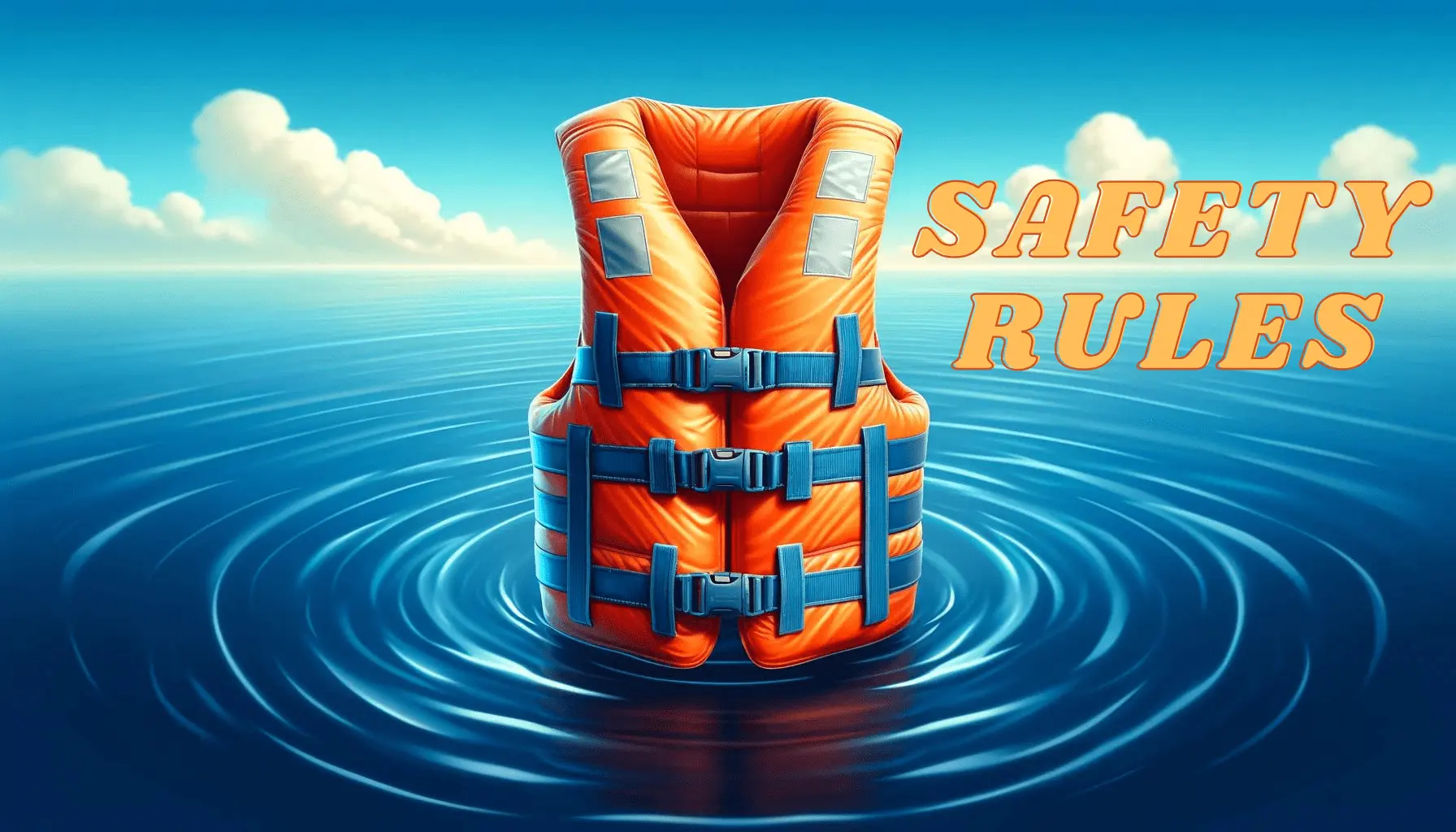Embarking on a kayaking adventure fills the spirit with anticipation, but often overlooked is the journey before the paddle meets the water – transporting your kayak. Missteps in kayak transportation can lead to damage to your vessel, or even worse, create road hazards. To start your voyage on the right note, understanding how to transport a kayak effectively and safely is paramount. This article unveils the intricacies of safe kayak transport, revealing how best to secure your kayak, the use of different rack systems, along with trustworthy methods and preventative measures to keep your kayak in prime condition while transporting a kayak to any destination.
Key Takeaways
- Assess the proper techniques and equipment for successful and safe kayak transport.
- Explore the diverse roof rack systems and their role in transporting a kayak with ease.
- Discover alternatives to traditional roof racks that ensure secure kayak transportation.
- Learn the importance of positioning when how to transport a kayak translates into smooth sailing.
- Identify the key safety points in securing a kayak that protect both your kayak and your fellow motorists.
- Understand the need for extra protection and padding during transport to maintain the integrity of your vessel.
Key Considerations for Transporting a Kayak Safely
Embarking on a paddling adventure begins with the essential task of securing a kayak for transport. This not only guarantees the integrity of your vessel but also safeguards all road users. Here, we identify the pivotal steps that should form your kayak transportation checklist to ensure your trip from garage to shore is as safe as it is enjoyable.
Kayak transportation safety hinges on meticulous attention to detail. Start by meticulously inspecting all straps; these are the linchpins of kayak stability on the road. Overlooked wear or improper tensioning could spell trouble underway. Prioritize the strength and condition of the straps to prevent any unfortunate incidents.
- Double-Check All Straps: Make certain each strap is securely fastened, without any signs of fraying or damage.
- Reinforcement with Bow and Stern Lines: Deploying additional lines at both the front and rear of the kayak adds an extra level of security, mitigating risk on the move.
- Wind Flow Management: Utilizing a cockpit cover thwarts the ballooning effect of wind traveling into the kayak, which can act as a sail and destabilize your load.
- Visibility for Fellow Motorists: A brightly colored or red flag at the end of the kayak dramatically enhances visibility, acquainting others with the dimensions of your load.
True kayak transportation safety transcends simple strap-down methods; it encompasses a holistic approach to road safety and craft protection.
Even the most conscientious kayakers revisit their loading routine each time, confirming that safety for all is never compromised.
Before setting out, ensure these best practices for securing a kayak for transport are not just known, but religiously implemented:
- Straps should be snug, but not so tight as to deform the hull of your kayak.
- Always use cam buckles for ease and a secure grip, keeping in mind to pad underneath to prevent vehicle scratches.
- Test the firmness of the secured kayak by slightly rocking it. If it moves, so too should you—to readjust the straps.
Executing these steps meticulously allows for a serene journey to the water’s edge, where your focus can shift from road to river or sea, with the assurance that you’ve upheld the highest standards of kayak transportation safety.
Choosing the Right Kayak Carrier for Your Vehicle
Embarking on a paddling adventure starts with getting your kayak to the water, and the key to this is finding the perfect kayak carrier. Whether you’re a seasoned kayaker or new to the sport, understanding the different types of carriers and how they fit your vehicle is critical. Not only will the right system make transport easier, but it’ll also ensure your kayak arrives safely, ready for your waterborne escapades.
Different Types of Kayak Carriers
Depending on your vehicle and the number of kayaks you wish to transport, there’s a range of kayak roof rack systems designed to meet your needs:
- J-style racks are great for saving space on your roof, allowing kayaks to be loaded at an angle.
- Saddle racks provide a solid platform for your kayak, supporting it from below in a horizontal position.
- If you’re planning to carry several kayaks, stacker racks are the way to go, enabling vertical storage of multiple boats.
- For short trips at lower speeds, consider temporary pads that can be easily added and removed as needed.
Evaluating Kayak Carrier Compatibility
Finding a kayak carrier that matches your vehicle’s specifications is just as important as the rack style itself. Evaluate your choice based on:
- Existing roof racks or crossbars on your vehicle. Not all carriers fit all roof racks, so check the compatibility carefully.
- The model and make of your vehicle to ensure the kayak rack fits securely and without a hassle.
- Considering the weight capacity of both your roof rack and the kayak carrier to avoid any damage or accidents.
Securing Kayak on a Roof Rack System
Once you have the correct kayak carrier installed, the final step is to secure your kayak using the right kayak straps. Here’s a brief guide to ensure your kayak doesn’t budge during transit:
Firstly, position the kayak so that it sits evenly on the rack. Then, using cam straps, loop them over the kayak and under the crossbars, pulling tightly enough to secure the kayak without deforming its structure. Lastly, attach bow and stern straps to offer additional security, especially if you’re headed on a long journey or traveling at higher speeds.

Understanding the Importance of Kayak Positioning
When it comes to kayak positioning, precision is critical. It’s not just about making sure your kayak fits onto your vehicle; it’s about maintaining the integrity of your kayak and ensuring safety during transport. The way a kayak is positioned can greatly influence aerodynamics and the vehicle’s handling. Most importantly, proper positioning is a key prevention measure against potential accidents or damages.
Start by placing your kayak centered and parallel to the vehicle, which will reduce wind resistance and prevent the kayak from acting like a sail. This alignment is essential for long trips or when driving at high speeds. Keep in mind that the bow should ideally face forward to minimize aerodynamic drag. If the kayak extends beyond the length of your vehicle, use a red warning flag to alert other drivers.
Kayak carriers are specifically designed to support kayaks in certain positions depending on the type:
- Horizontal on saddle carriers – Best for single kayaks offering a strong and secure grip.
- Vertical on stackers – A great space-saving option for multiple kayaks.
- At an angle on J-racks – They balance ease of loading with efficient use of space.
It’s crucial to read through your carrier’s manual to ensure you’re transporting a kayak in accordance with the manufacturer’s guidelines. Every carrier comes with its own set of recommendations for securing and positioning kayaks effectively. Remember, correctly positioning your kayak not only safeguards your investment but also promotes road safety for you and your fellow travelers.
How to Transport a Kayak
Finding the best way to transport a kayak can be as simple as matching your method to your vehicle type and the kayak you own. Whether you drive a compact car, own an inflatable model, or lack a roof rack, transport solutions are available to cater to your needs.
Transporting Kayaks on a Small Car
For transporting on a small car, the use of temporary pads or foam blocks can be a game-changer. These act as a buffer between your car’s roof and the kayak, preventing any potential scratches or pressure dents. Here’s how to secure a kayak to your compact vehicle:
- Place the foam blocks or temporary pads on the roof of the car.
- Center the kayak on these pads, hull facing up, bow and stern aligned with the car’s direction.
- Thread cam straps over the kayak’s body, through the car doors or windows, and tighten firmly to avoid movement during transit.
Taking extra precautions, like checking the kayak’s security by gently rocking it before hitting the road, ensures safety during transportation.
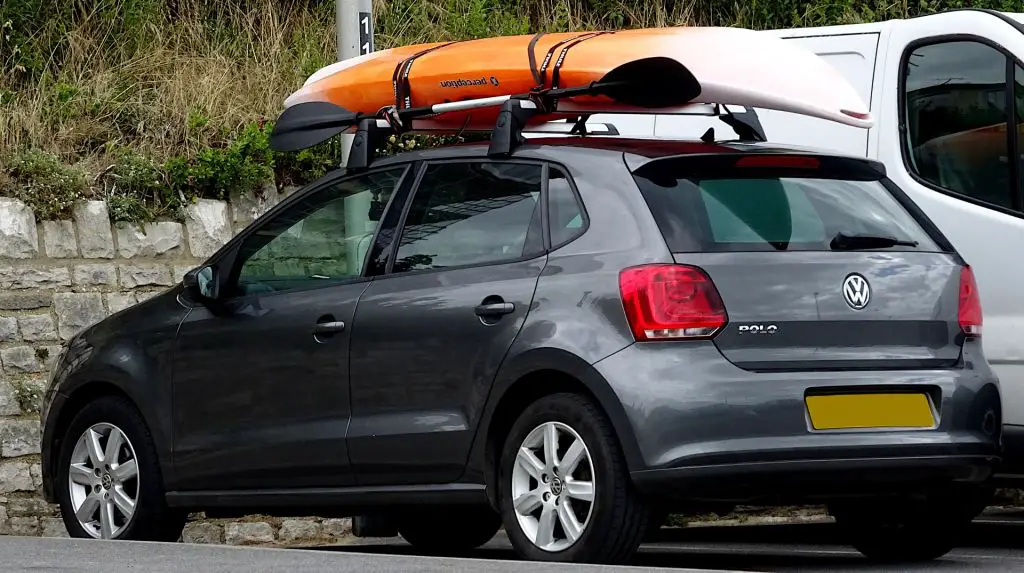
Transporting Inflatable Kayaks
Transporting inflatable kayaks offers unparalleled convenience. Since they deflate to fit within a storage bag, you can easily place them in your trunk, rear seats, or even on public transport. Key steps for transport include:
- Deflate the kayak fully and remove any sharp objects that could puncture the material.
- Fold or roll the kayak as recommended by the manufacturer to avoid creases.
- Place the kayak into its bag along with all accessories, such as the pump and paddles.
This method eliminates the need for external transport systems and simplifies the logistics of getting to and from your paddling destination.
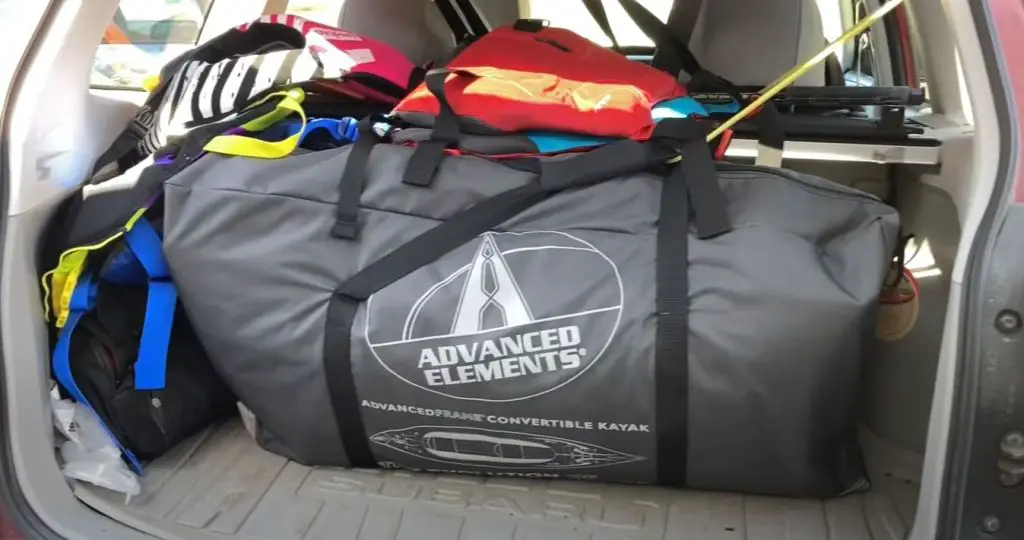
Kayak Transportation Without a Roof Rack
Accessing the best way to transport a kayak without a roof rack is possible with innovative solutions like kayak trailers. These trailers are ideal for users seeking a method that:
- Requires minimal physical effort to load and unload the kayak.
- Avoids the necessity of lifting the kayak onto a vehicle’s roof.
- Provides secure and stable transportation for longer distances.
Kayak trailers connect to the back of your vehicle and can hold multiple kayaks at once, making them an excellent choice for group expeditions or family outings. Always ensure that your trailer’s lighting system is properly connected and that your kayaks are tightly secured before driving.
Securing a Kayak for Transport: Cam Straps and Tie Downs
When it comes to kayak tie down straps and ensuring the safety and security of your vessel during transport, understanding the proper use of these tools is essential. Kayak tie down straps, commonly referred to as cam straps, are an integral part of securing a kayak to your vehicle, and they offer a balance of strength, ease, and efficiency for paddlers.
Unlike ropes which require the knowledge of complex knots, cam straps make the process of securing a kayak more straightforward. A typical cam strap consists of a long piece of durable webbing and a metal or plastic buckle. To use, you simply thread the strap through the buckle, pull it snug, and the cam mechanism locks in place, securing your kayak without the risk of slipping.
However, it’s crucial to avoid the pitfall of over-tightening. While a tight strap ensures transport safety, excessive force can deform or damage the hull of the kayak, inadvertently compromising its integrity.
- Inspect straps for wear and tear before use to ensure they can withstand the rigors of the road.
- Position the cam buckle in a place where you can easily access it to tighten or release as needed.
- Ensure the cam straps are flat against both the hull of the kayak and the crossbars of the vehicle’s roof rack to distribute pressure evenly.
Supplementing cam straps with bow and stern lines is a best practice for transport safety, particularly when driving at higher speeds or in high wind conditions. These additional tie downs help to anchor the kayak at its most significant points, reducing movement and potential wind lift.
Properly secured kayaks lead to safer roads and more enjoyable journeys to and from the water. By investing a little time to secure your vessel properly, you create peace of mind, protecting both your kayak and your fellow travelers.
By following these guidelines on kayak tie down straps and securing your kayak for transport, you can safely and confidently reach your paddling destination.
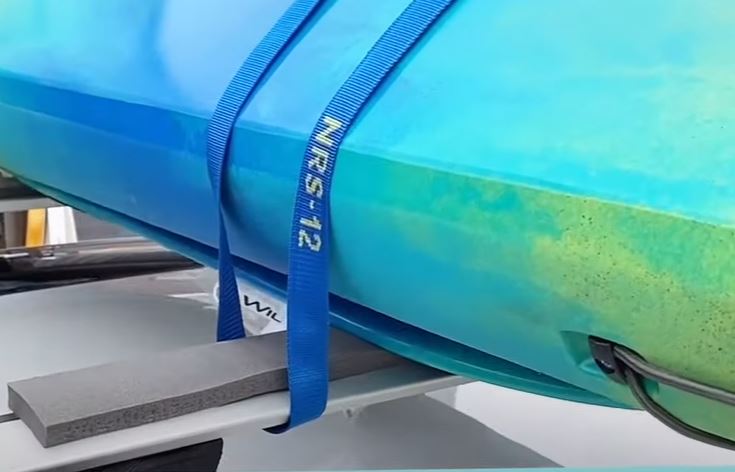
Using Kayak Foam Blocks and Pads for Extra Protection
For kayakers, ensuring the safety of their vessel during transport is as important as securing their personal gear. One integral aspect of protection during kayak transport is the proper application of kayak foam blocks and padding solutions. These tools offer an extra layer of care, crucial for maintaining the kayak’s condition and preventing any form of damage.
The Role of Foam Blocks in Kayak Transportation
Kayak foam blocks act as a buffer between your roof rack and the kayak. They’re designed to conform to the hull’s shape, providing a stable base that distributes the weight evenly while avoiding pressure points that could deform or damage your kayak. The versatility of foam blocks makes them suitable for various kayak models, enhancing their standing as an essential accessory for kayak owners.

Alternative Padding Solutions
- Non-slip mats
- Custom-cut polystyrene sheets
- Bubble wrap for delicate areas
While kayak foam blocks are invaluable, not all situations call for their use. Outdoor enthusiasts often turn to alternative padding solutions like thick blankets, towels, or specially designed kayak pads. These offerings can be just as effective, especially when adapted to the contours of your kayak and wrapped securely to stay in place during transit.
Preventing Damage to Your Kayak’s Hull
Prioritizing the hull’s integrity is crucial, with even the smallest ding or dent capable of affecting a kayak’s performance. Proper padding, especially during longer journeys, is a line of defense against the rigors of the road where bouncing, vibrations, and continuous friction are ever-present.
Investing time to secure the correct padding systems pays off by extending the life of your valuable equipment, which is why seasoned kayakers never overlook the importance of kayak foam blocks and protective padding. Whether you opt for commercially available blocks or improvised padding, maintaining a scratch-free and dent-free hull will enhance your kayaking experiences for years to come.
Safe Loading Techniques for Solo Kayakers
For the solo kayak enthusiast, loading a kayak single-handedly can be as much a part of the adventure as the journey on water itself. Navigating this challenge effectively requires the right techniques and some helpful kayak transport tools that are designed specifically for a smooth and secure solo kayak loading experience.
Tackling Kayak Loading without Assistance
Performing a well-executed solo load starts with preparation and planning. Without the luxury of an extra pair of hands, you’ll want to utilize the environment, position the kayak strategically, and make use of your body mechanics to leverage the kayak onto your vehicle.
Tools and Accessories to Ease Solo Loading
From specialized kayak transport tools to makeshift solutions, there are a number of aids that can help solo paddlers. Rollers, lift assist racks, and even the simple addition of a non-slip mat can provide the needed edge to load a kayak smoothly. Proper equipment not only eases the process but also safeguards against potential damage to your kayak and vehicle.
Step-by-Step Guide for Single Paddler
Step One: Position your kayak parallel to your vehicle, close enough to make the transition to the roof as seamless as possible. Step Two: Employ your chosen loading aid—like a roller or lift assist—and place it at the rear of the vehicle. Step Three: Gently lift the bow of the kayak onto the loader, then push from the stern, guiding the kayak as it slides into place on your roof rack. Do not forget to protect yourself—padding on the shoulder or donning a Personal Flotation Device (PFD) can prevent injuries during the process.
- Check that the kayak is centered and securely in place, using cam straps to fasten it down.
- Double-check all points of contact for security and stability before taking to the road.
- Remember to employ bow and stern tie-downs as an extra precaution, especially for longer journeys.
By mastering these techniques and making good use of kayak transport tools, even solo adventurers can load their kayak with confidence and relative ease, ensuring they’re ready for the serenity and excitement that awaits on the water.
Maintaining Stability: Kayak Straps and Racking Systems
To ensure stable kayak transport, it is crucial to pay attention to both the kayak straps maintenance and the racking systems on your vehicle. The journey from your storage space to the water’s edge is laden with potential perils for your kayak—bumps, turns, and gusts of wind all pose threats to an inadequately secured vessel. Heeding the following guidance will help keep your kayak immobile and unscathed, preserving the shape and integrity of its hull.
Properly secured straps and racking systems act as the lifeline between your kayak and a safe arrival at your paddling destination.
Secure fastening begins with looping the kayak straps correctly. Straps should be threaded under the crossbars and through the kayak’s transport racks. When tightening the straps, they should be pulled to a point where they are snug around the body of the kayak, yet not so tight that they risk deforming the hull over time.
Attention to the racking systems is just as vital. These systems must align with the natural shape of your kayak to provide adequate support. It’s not just about the size or type of racks; it’s about how well they fit your specific model of kayak. Utilize all provided cradle pads or tie-down points, as these additions can significantly boost the stability of the kayak during transit.
Below is a concise checklist for maintaining a secure transport setup:
- Inspect kayak straps for wear and tear before and after transit.
- Confirm that all straps are firmly secured, but not excessively tightened.
- Ensure that the racking system is the right fit for your kayak’s design and size.
- Periodically check the tightness of straps throughout your journey to account for any loosening.
- Add additional tie-downs in the form of bow and stern lines for extended trips or when driving at highway speeds.
In conclusion, consistent kayak straps maintenance and using an appropriately matched racking system are the bedrocks of stable kayak transport. By following these guidelines, kayakers can drive with confidence, knowing their vessel is as safe atop their vehicle as it is gliding through the water.
The Best Way to Transport Multiple Kayaks at Once
When faced with the challenge of transporting multiple kayaks, outdoor enthusiasts often turn to innovative solutions to accommodate their needs. Whether it’s a family adventure or a group kayak expedition, figuring out the optimal way to carry all those kayaks can seem daunting. However, carefully planning and selecting the right gear can make the process efficient and stress-free.
Optimizing Your Vehicle’s Space
To maximize vehicle space, it’s critical to consider the type of racking system that’s best suited for your load. Adding a second kayak rack or using stacker bars allows multiple vessels to be carried at once. It’s important not only to fit the kayaks securely but to also account for vehicle efficiency and driving safety.
- Ensure kayaks are evenly distributed to maintain balance.
- Check the capacity of your roof and use racks that are designed for the load.
- Strategically place the longest kayaks at the bottom when stacking.
Considerations for Family and Group Outings
For those planning outings with family or friends, group kayak transportation necessitates additional considerations. The ease of loading and unloading becomes particularly important to keep the experience pleasant for all skill levels and ages.
Ensure each kayak is accessible and that the group is knowledgeable about safe handling practices to prevent accidents or damage to the kayaks.
Kayak Trailers as an Effective Solution
Kayak trailers are a popular choice for their convenience and ground-level loading capability. They negate the need for heavy lifting and simplify the process of transporting multiple kayaks. The trailers can handle the weight and bulk of several kayaks, making them ideal for larger gatherings and reducing strain on the vehicle’s roof.
- Seek trailers that accommodate the number of kayaks you plan to carry.
- Investigate options with integrated storage for paddling gear and equipment.
- Look for trailers with sturdy construction and reliable wheels suitable for long distances.
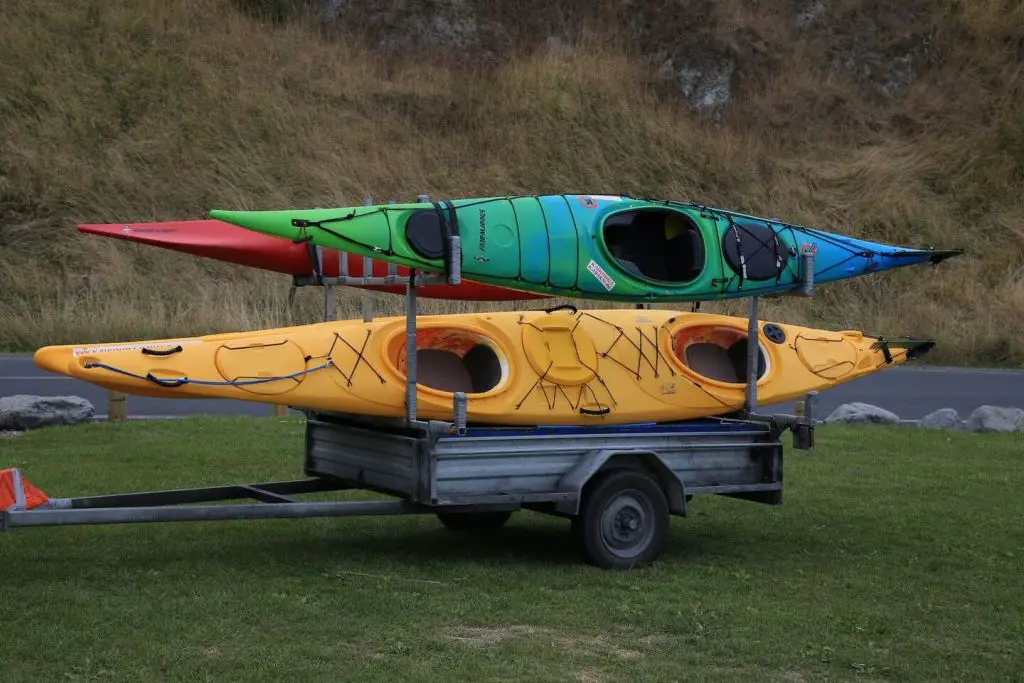
Conclusion
Mastering kayak transportation is more than a mere convenience—it is a pledge towards the safety and preservation of your beloved vessel. Throughout this article, we’ve explored the nuances of kayak transportation, offering insights on how to carry your craft with ease and assurance. We’ve covered the importance of choosing the right carrier for your vehicle, securing the kayak with diligence, and employing proper loading techniques that safeguard both paddler and kayak.
Whether you are preparing for a solitary journey or organizing a group expedition, the expertise shared here empowers paddlers to navigate the logistics of transportation seamlessly. By adhering to manufacturer guidelines and regularly inspecting the security of your setup, you can ensure that your kayak arrives at your destination intact. After all, the core of a successful paddling adventure lies in the certainty that your vessel is transported safely and efficiently.
As kayakers, it’s imperative to remain vigilant about the integrity of our gear—this extends to the methods we choose for transporting our kayaks. By meticulously applying the techniques you’ve learned, you are effectively championing the art of kayak transportation. Now you are equipped with the knowledge to embark on countless aquatic explorations, transporting your kayak without concern, ready to conquer new waters and create lasting memories.
FAQ
What are some tips for safe kayak transport?
Always secure your kayak properly using cam straps and bow and stern lines, ensure the kayak is centered and facing forward on the roof of your car, and double-check all points of contact for security before hitting the road. Consider a cockpit cover to prevent wind from catching and a red flag for visibility to other motorists.
What should be considered when transporting a kayak to ensure safety?
Key considerations include making sure the kayak is well-secured to prevent it from dislodging, using a racking system that is compatible with your vehicle, and using foam blocks or padding to protect the kayak’s hull during transport.
How do I choose the right kayak carrier for my vehicle?
Evaluate your vehicle’s type, including whether it has factory-installed crossbars and the roof’s size and shape. Then choose between J-style racks, saddle racks, stackers, or temporary pads based on your specific needs and compatibility with your car.
How important is kayak positioning during transportation?
Proper kayak positioning is crucial for aerodynamics, stability, and preventing damage to your kayak. The kayak should be centered and placed parallel to the vehicle, preferably with the bow facing forward.
What is the best way to transport a kayak on a small car or without a roof rack?
For small cars without crossbars, temporary pads or foam blocks can be used. Inflatable kayaks offer ease of transport as they can be deflated and packed away. For cars without roof racks, you may use a lightweight trailer which is also convenient for transporting multiple kayaks.
How should you secure a kayak for transport using cam straps and tie downs?
Secure the kayak by looping the cam straps under the crossbars and over the kayak, then fastening them firmly but not too tightly to prevent hull deformation. Use bow and stern lines for additional support, especially for longer trips or when driving at highway speeds.
Why are kayak foam blocks necessary for transport?
Kayak foam blocks provide a supportive layer between the kayak and the vehicle, protecting the kayak’s hull from scratches and dents during transit. They are especially important for vehicles without a dedicated racking system.
What alternative padding could I use instead of foam blocks?
If you do not have foam blocks available, alternative padding such as blankets or towels can offer a protective layer between the kayak and the car. Make sure that whatever material you use, it offers enough cushioning to protect the kayak hull.
How can a single paddler load a kayak on their own?
Single paddlers can use tools like roller loaders or lift assist racks to help them load the kayak onto the vehicle. Place the kayak parallel to the car, lift it onto the rear of the car with the tools, then gently slide the kayak into position on the racks.
How do you maintain stability when transporting a kayak?
Stability is maintained by using the correct straps and racking systems suited to your car and kayak. Straps should be securely fastened and the kayak firmly in place without over-tightening to avoid damaging the kayak’s structure.
What are the considerations when transporting multiple kayaks?
When transporting multiple kayaks, ensure that your vehicle’s roof can support the combined weight and that you have sufficient straps and tie-down points for each kayak. Consider using stacker bars, a second rack, or a trailer to accommodate multiple vessels and make transportation easier.

